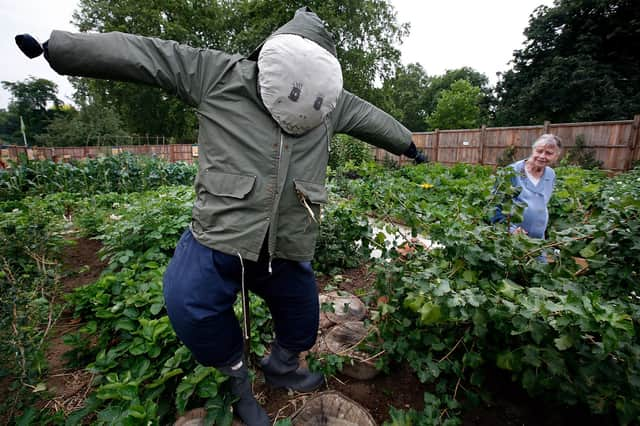Scotland needs an allotment revolution. Here's how to start it – Miles Briggs MSP


There are currently 47 allotment sites in Edinburgh, with 35 of those coming under the control of the council. Across those 35, City of Edinburgh Council manages 1,586 individual spaces.
The pandemic has seen a significant increase in the number of people expressing an interest in taking on an allotment – at the last count there were 5,496 people and families on waiting lists for one in the Capital, almost three-and-a-half times higher than current capacity.
Advertisement
Hide AdAdvertisement
Hide AdEstimated waiting times in Edinburgh were previously about eight years, but since the pandemic that has only got longer. In East Lothian, there is an estimated 15-year wait.
Owning an allotment space brings more social interaction, a better diet and rekindles people’s relationship with land. With an increase in food prices and the cost of living generally, the opportunity to grow food in an allotment is increasingly attractive.
Earlier this year, I called for a national allotment viability study to review potential land which could be developed for allotments and community growing spaces. In the Scottish Borders, they have successfully developed a community food growing strategy to map what land is potentially suitable for allotments.
It is critical to keep in mind the quality of land for allotments and community growing purposes. Not all common good land is necessarily appropriate and it is important to find land which is suitable for growing.
Advertisement
Hide AdAdvertisement
Hide AdThe typical allotment size in Scotland is about the same as a tennis court. This size was established at the end of the First World War and is the area of land needed to meet most of the fruit and vegetable needs of a household of four.
There is the potential to develop smaller allotment spaces, which would bring people the benefits of owning an allotment, without producing the same amount of food. This would allow more to be created, whilst also having more manageable allotment spaces for people who are new to it.
There would be additional considerations with doing this, including having more communal spaces for tools and compost, with less space available on each allotment.
Undoubtedly there is high demand for allotments and community growing spaces, especially in the Capital.
Advertisement
Hide AdAdvertisement
Hide AdThere are numerous benefits from having an allotment, including our relationship with food and the land. Over generations, we have moved away from growing our own food and moved to getting it from a supermarket.
This means that people do not have the same understanding of where food comes from, compared to previous generations. Increasing the number of allotments available across the country can only be a good thing for our national relationship with healthy food.
From an environmental perspective, reducing the carbon footprint of the food that we all consume is in line with national goals of becoming carbon neutral.
The demand for allotments spaces and community growing spaces is obviously there and a national allotment viability study could go a long way to increasing capacity for people to grow their own produce. So the message is clear – it’s time for an allotment revolution in Scotland.
Miles Briggs is a Conservative MSP for Lothian
Comment Guidelines
National World encourages reader discussion on our stories. User feedback, insights and back-and-forth exchanges add a rich layer of context to reporting. Please review our Community Guidelines before commenting.
